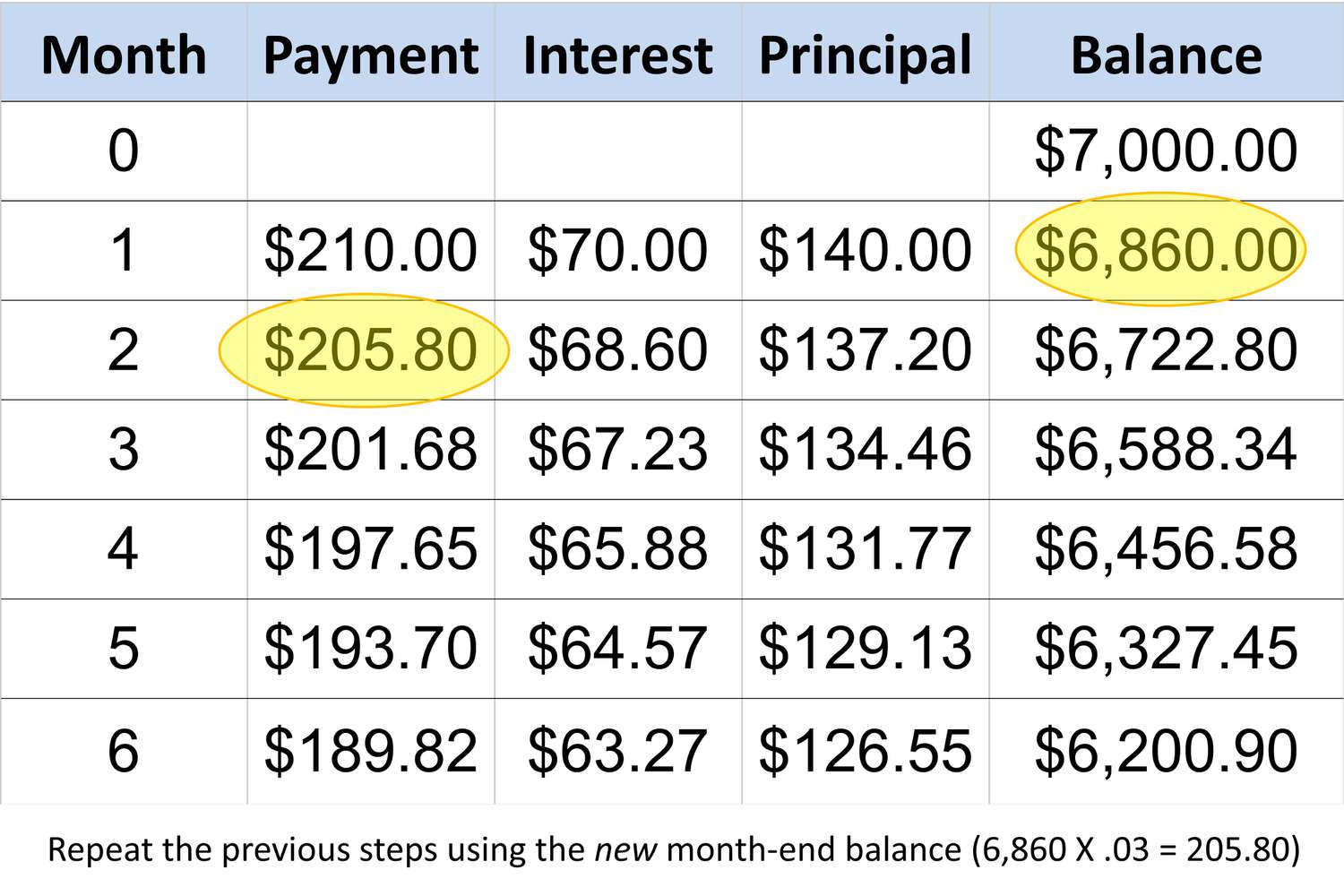

Finance
How Much Down Payment For A Business Loan
Published: December 26, 2023
Looking for a business loan? Find out how much down payment is required and secure financing for your business. Finance your dreams with ease.
(Many of the links in this article redirect to a specific reviewed product. Your purchase of these products through affiliate links helps to generate commission for LiveWell, at no extra cost. Learn more)
Table of Contents
Introduction
When starting or expanding a business, securing financing is often a crucial step. Business loans provide the necessary capital to invest in equipment, hire employees, and cover various operating expenses. However, obtaining a business loan requires careful consideration of several factors, including the down payment.
The down payment is the initial amount of money that the business owner must contribute towards the loan before receiving funding from the lender. It acts as a form of collateral and demonstrates the borrower’s commitment and ability to manage financial responsibilities. Understanding the concept of down payments and their significance is essential for any entrepreneur seeking business financing.
Throughout this article, we will delve into the details of down payments for business loans. We will explore the factors influencing the down payment amount, the types of down payment options available, the benefits of a higher down payment, and potential challenges with down payments. Additionally, we will provide practical tips on how to save for a down payment and calculate the ideal amount for your business loan.
By the end of this article, you will have a comprehensive understanding of down payments and be better equipped to navigate the process of obtaining a business loan.
Understanding Down Payments for Business Loans
When applying for a business loan, the lender will typically require a down payment as a form of security. A down payment is the initial amount of money that the borrower contributes towards the loan before the lender provides the remaining funds.
The purpose of a down payment is twofold. First, it reduces the amount of risk for the lender, as the borrower has a financial stake in the business and is less likely to default on the loan. Second, it shows the lender that the borrower has the ability to save money and manage their finances responsibly, increasing their credibility as a borrower.
The down payment requirement for a business loan can vary depending on factors such as the lender, the type of loan, the borrower’s creditworthiness, and the overall financial health of the business. Typically, down payments range from 10% to 30% of the total loan amount.
For example, if you are seeking a $100,000 business loan and the lender requires a 20% down payment, you would need to contribute $20,000 of your own money towards the loan. The lender would then provide the remaining $80,000.
It’s important to note that down payments are separate from any fees or interest associated with the loan. They serve as an upfront investment and reduce the loan amount that needs to be repaid.
Furthermore, down payments for business loans are typically paid in cash and cannot be supplemented with other forms of collateral, such as equipment or property. This cash contribution demonstrates the borrower’s commitment to the loan and reduces the risk for the lender.
Understanding down payments is crucial when seeking a business loan. It’s important to consider the down payment requirements of different lenders and carefully evaluate your financial capability to make the necessary contribution. By doing so, you can approach the loan application process with confidence and increase your chances of securing the necessary funding for your business.
Factors Influencing Down Payments
Several factors can influence the down payment amount required for a business loan. Understanding these factors will help you gauge what to expect and adequately plan for the down payment. Here are the key factors that lenders consider when determining the down payment:
- Creditworthiness: Your personal and business credit scores play a significant role in determining the down payment requirement. Lenders assess creditworthiness to evaluate the level of risk associated with lending you money. Higher credit scores often result in lower down payment requirements.
- Type of loan: Different types of loans have varying down payment requirements. For example, Small Business Administration (SBA) loans typically require lower down payments, sometimes as low as 10%, while traditional bank loans may require higher down payments, usually between 20% and 30%.
- Loan amount: The size of the loan can impact the down payment requirement. Generally, larger loan amounts may necessitate higher down payments. Lenders want to ensure that borrowers have a substantial stake in the loan to minimize the risk of default.
- Business financials: Lenders review the financial health of your business, including factors such as revenue, cash flow, and profitability. A strong financial position can potentially result in lower down payment requirements, as it demonstrates your ability to manage finances.
- Industry risk: The industry in which your business operates can influence the down payment requirement. Some industries carry more inherent risks than others, and lenders may require larger down payments to mitigate those risks.
It’s important to note that these factors are not independent of each other and may interact in determining your down payment requirement. Lenders evaluate each borrower’s unique situation and assess these factors holistically to determine an appropriate down payment.
Considering these factors and conducting thorough research on different lenders’ down payment requirements will help you plan and prepare for the down payment amount necessary to secure a business loan.
Calculating the Ideal Down Payment Amount
Calculating the ideal down payment amount for a business loan depends on various factors, including your financial situation, loan terms, and the lender’s requirements. While there isn’t a one-size-fits-all formula, you can use the following steps as a general guideline to estimate the ideal down payment amount:
- Evaluate your financial capability: Take a comprehensive look at your personal and business finances to determine how much you can comfortably contribute as a down payment. Consider your savings, cash flow, and other financial commitments.
- Research lender requirements: Research different lenders and their down payment requirements for the type of loan you are seeking. Understanding the range of down payments expected by lenders will give you a benchmark to work with.
- Assess your creditworthiness: Your credit score plays a significant role in determining the down payment requirement. The better your credit score, the more likely you are to qualify for lower down payment options. Review your credit report and address any issues that could affect your creditworthiness.
- Consider loan terms: The specific terms of the loan, such as interest rate, repayment period, and loan duration, can impact the down payment amount. Higher interest rates or shorter repayment periods may increase the down payment requirement.
- Weigh the benefits of a higher down payment: Consider the advantages of making a higher down payment. A higher down payment can reduce the loan amount, resulting in lower monthly payments and potentially better loan terms.
- Seek professional advice: Consult with financial advisors or loan experts who can provide guidance tailored to your specific situation. They can help you assess your financials, evaluate different loan options, and determine the ideal down payment amount.
Remember that it’s essential to be realistic and prudent when calculating the ideal down payment amount. Consider your business’s cash flow, future financial projections, and any potential risks before finalizing the down payment. Finding the right balance will help ensure that you can comfortably manage the loan while minimizing the risk for both you and the lender.
Types of Down Payment Options
When it comes to down payments for business loans, there are several options available for borrowers. Understanding these different options can help you choose the one that aligns with your financial situation and business needs. Here are some common types of down payment options:
- Cash: Cash is the most straightforward and common down payment option. It involves using your own money to make the required down payment. This option demonstrates your financial commitment to the loan and provides immediate funds for the lender.
- Assets: In some cases, lenders may allow borrowers to contribute non-cash assets as a down payment. These assets may include equipment, vehicles, or property. However, it’s important to note that not all lenders accept assets as down payments, and it depends on the type of loan and the lender’s specific policies.
- Equity: If you have existing business equity, you may be able to use it as a down payment. This typically applies to business owners who are seeking financing for expansion or acquisition. Lenders may consider the appraised value of your business or the equity you hold in your current business as part of the down payment.
- Trade-in value: For business owners looking to finance the purchase of new equipment or vehicles, trade-in value can be used as part of the down payment. This involves trading in your old equipment or vehicle and applying its value towards the down payment.
- Government grants or programs: Depending on your location and business type, there may be government grants or programs that can assist with your down payment. These programs are designed to support small businesses and provide financial resources for starting or expanding your enterprise.
It’s important to note that the availability and acceptance of these down payment options may vary depending on the lender, loan type, and specific circumstances. Before considering any alternative down payment options, it’s crucial to discuss them with your lender to ensure eligibility and compliance with their requirements.
Understanding these different down payment options allows you to explore alternatives beyond traditional cash payments. By considering the specifics of your business and financial situation, you can determine which option aligns best with your needs and helps you secure the necessary financing for your business venture.
Benefits of a Higher Down Payment
Opting for a higher down payment when obtaining a business loan offers several benefits for both the borrower and the lender. While it may require a larger upfront investment, the advantages often outweigh the initial cost. Here are some key benefits of making a higher down payment:
- Lower loan amount: One of the primary benefits of a higher down payment is reducing the loan amount. By borrowing less money, you decrease your overall debt and potentially lower the interest payments over the loan term.
- Better loan terms: Lenders appreciate borrowers who have a strong financial stake in the loan. A higher down payment signals your commitment and financial stability, which can result in more favorable loan terms such as lower interest rates, longer repayment periods, or reduced fees.
- Improved cash flow: With a smaller loan amount, your monthly loan repayments are likely to be lower. This can positively impact your business’s cash flow, providing more room for operating expenses, investments, and growth opportunities.
- Lower risk for the lender: A higher down payment mitigates the lender’s risk in case of loan default. By having a significant financial stake in the business, you demonstrate a stronger commitment to the loan and a lower likelihood of defaulting on payment obligations.
- Increased borrower credibility: Making a substantial down payment enhances your credibility as a borrower. It showcases your financial responsibility, ability to save money, and dedication to the success of your business. This can strengthen your relationship with lenders and potentially open doors to future financing opportunities.
- Faster equity accumulation: A higher down payment means you start with a greater equity stake in the business. As you make loan payments, your equity will increase at a faster rate. This positions you to have more control and flexibility over your business’s financial future.
It’s crucial to consider your financial situation and business goals when deciding on the down payment amount. While a higher down payment offers numerous advantages, it’s essential to strike a balance that does not strain your cash reserves or hinder your business’s growth potential.
By carefully evaluating the benefits and weighing them against your financial capabilities, you can determine the optimal down payment amount that aligns with your goals and enhances your overall loan experience.
Potential Challenges with Down Payments
While down payments can provide numerous benefits, there are also potential challenges that borrowers may face when it comes to making the required payment. Understanding these challenges can help you navigate the process more effectively and develop strategies to overcome them. Here are some potential challenges associated with down payments for business loans:
- Limited cash reserves: Coming up with a significant amount of cash for a down payment can be challenging, especially for small businesses or startups with limited cash reserves. Insufficient cash on hand may restrict your ability to make a higher down payment, potentially leading to higher loan amounts or less favorable loan terms.
- Impact on cash flow: Making a sizable down payment can impact your business’s cash flow. It may deplete your available funds and limit your ability to meet other financial obligations or seize growth opportunities. Careful cash flow management is crucial when balancing down payments with ongoing business expenses.
- Compromising other financial goals: Allocating a significant portion of your savings towards a down payment can delay or hinder other financial goals, such as expanding your business, upgrading equipment, or creating an emergency fund. It’s important to consider the long-term effects of a large down payment on your overall financial plans.
- Obtaining financing for the down payment: For borrowers struggling to come up with the necessary cash, securing financing specifically for the down payment can present another challenge. It requires finding alternative funding sources or negotiating with lenders to explore options for financing the down payment itself.
- Impact on loan eligibility: In some cases, lenders may require a minimum down payment amount to qualify for a business loan. If you cannot meet this requirement, it may limit your options or result in loan denial. It’s essential to understand the down payment criteria set by lenders to ensure eligibility before applying.
Navigating these challenges requires careful planning and consideration of your business’s financial situation. It’s crucial to assess your cash flow, evaluate the impact on other financial goals, and explore alternative funding options if necessary.
Communicating openly with lenders about your financial constraints and seeking their guidance can also help overcome potential challenges. Lenders may offer flexible down payment solutions, recommend alternative loan programs, or provide advice on how to address specific financial obstacles.
By proactively addressing potential challenges, you can minimize their impact and increase your chances of successfully securing a business loan while managing your financial responsibilities effectively.
Tips for Saving for a Down Payment
Saving for a down payment can be a significant financial undertaking, but with careful planning and disciplined saving strategies, it is achievable. Here are some tips to help you save for a down payment:
- Create a budget: Assess your current income and expenses to develop a comprehensive budget. Identify areas where you can cut back on unnecessary spending and allocate those savings towards your down payment goal.
- Set a savings goal: Determine how much you need to save for the down payment and set a realistic timeline. Break it down into manageable monthly or weekly savings targets to track your progress and stay motivated.
- Automate your savings: Set up automatic transfers from your checking account to a dedicated savings account specifically for your down payment. This ensures consistent savings without the temptation to spend the money elsewhere.
- Reduce debt: Prioritize paying off high-interest debts to free up additional funds for savings. Lowering your debt-to-income ratio can also improve your creditworthiness and potentially lead to better loan terms.
- Explore down payment assistance programs: Research government or non-profit organizations that offer down payment assistance programs. These programs provide financial support or grants for qualified borrowers to help with their down payment.
- Downsize or sell unused assets: Consider selling assets that are no longer needed or downsizing your living arrangements to free up cash for your down payment. This can accelerate your savings process and reduce financial burdens.
- Generate additional income: Explore opportunities to increase your income, such as taking on a part-time job, freelancing, or starting a side business. Supplementing your primary income can help boost your savings potential.
- Seek expert advice: Consult with financial advisors or mortgage professionals who can provide personalized advice and strategies based on your unique financial situation. They can offer insights on budgeting, investment options, and down payment assistance programs.
- Stay committed and motivated: Saving for a down payment requires discipline and perseverance. Keep your goal in mind and celebrate milestones along the way. Visualize the benefits of homeownership or business expansion to maintain motivation throughout the saving process.
Remember, saving for a down payment is a journey that requires time and dedication. Implementing these tips and remaining focused on your financial goals will bring you closer to achieving your down payment target and securing the necessary financing for your business.
Conclusion
Understanding down payments for business loans is essential for any entrepreneur seeking financing. It serves as a significant factor in determining loan eligibility and terms, as well as showcasing your commitment and financial responsibility as a borrower.
Throughout this article, we explored the concept of down payments, the factors that influence their amount, and the various options available to borrowers. We discussed the benefits of making a higher down payment, such as lower loan amounts, improved loan terms, and increased borrower credibility. Additionally, we acknowledged the potential challenges associated with down payments, including limited cash reserves, impact on cash flow, and the need for alternative financing options.
To navigate the process of saving for a down payment, we provided several practical tips, including creating a budget, automating savings, and exploring down payment assistance programs. By implementing these strategies and seeking expert advice, you can effectively save for a down payment and increase your chances of securing a business loan.
Remember, the ideal down payment amount depends on your financial situation, loan terms, and lender requirements. It is crucial to evaluate these factors carefully and strike a balance that aligns with your business goals and financial capabilities.
Ultimately, a well-planned down payment shows lenders that you are committed to the success of your business and positions you for better loan terms. By being proactive, disciplined, and informed, you can successfully navigate the down payment process and obtain the necessary funding to start or expand your business.
Now that you have a comprehensive understanding of down payments for business loans, take the next steps to assess your financial situation, develop a savings plan, and explore loan options that best suit your needs. With the right preparation and persistence, you can secure the financing you need to bring your business aspirations to life.














